by Federico Giannini, Ilaria Baratta , published on 27/08/2017
Categories: Works and artists
/ Disclaimer
The MAGI 900 Museum houses works by great 20th-century artists such as Modigliani, De Chirico, and Manzoni, but also great old art from the area.
An entrepreneur with a passion for art and a desire to share it with everyone, a collection featuring the greatest artists of the 20th century, an industrious country town between Bologna and Ferrara, and an old grain storage silo. These are the ingredients that gave birth to one of Emilia-Romagna’s most interesting museums: the MAGI ’900 in Pieve di Cento, founded in 2000 by entrepreneur Giulio Bargellini as the “Art Museum of Italian Generations of the 20th Century.” The name chosen at the time was intended from the outset to manifest the organization of the collection, based on the generations of Italian artists that followed one another from the beginning of the so-called “short century” to the dawn of the 2000s. Then came the age of acronyms, and the museum expanded in step with the expansion of the collection, taking on the more immediate name by which it is known today. While always keeping its soul alive: not only a place of preservation but also a space fit to host events, to raise awareness oftwentieth-century andcontemporary art through serious outreach, to foster the development of relationships between those involved in culture. A fruitful exchange between private and public dimensions, a museum that opens to a wide audience, addressing citizens, art lovers, but also students, critics, collectors and artists with an activity that is always varied and articulated. “It is the territory that is the first to benefit from the presence of a contemporary art museum,” entrepreneur Giulio Bargellini, founder of a company in the lighting industry (later sold in 2008) and an attentive collector, declared in an interview a few years ago, making his intentions manifest.
The MAGI ’900 rooms found space in a building intended for agricultural use, a barn built in 1933 but disused for years: Giulio Bargellini liked the idea of returning to the community, albeit with a different but equally fundamental function, a place that had served it for years. He therefore commissioned architect Giuseppe Davanzo to restore the silo and fit out the interior spaces: the project did not include any substantial changes to the building’s exterior, distinguished by the blue façade that makes it immediately recognizable in the urban layout of Pieve di Cento (MAGI ’900 is located at the gates of the historic center, just outside the ancient entrance gate to the rural village). The building’s importance, however, would have been underscored by a large ceramic mosaic that now surrounds it: it is called Constellations of Art, it is the work of Ferrara artist Marco Pellizzola, and its purpose is to enhance the old silo while giving an idea of the artistic languages with which the public is about to get acquainted inside. What would be transformed would be the interior: Davanzo carved out large spaces suitable to house the works of the permanent collection in a coherent itinerary, subdivided in a chronological order that, however, often indulges in variations on a thematic basis, and to house the various temporary exhibitions that the museum hosts, over a total area of more than nine thousand square meters. The visit does not end inside: a Sculpture Garden was also designed to house works of monumental scope, which serves as a sort of “introduction” to the collection that visitors can find inside. The museum has since been enriched with an additional body of the building to expand its spaces, and two subsequent expansions (one in 2005-2006 and one in 2015) that added more volumes, a three-story building, and a rooftop terrace.
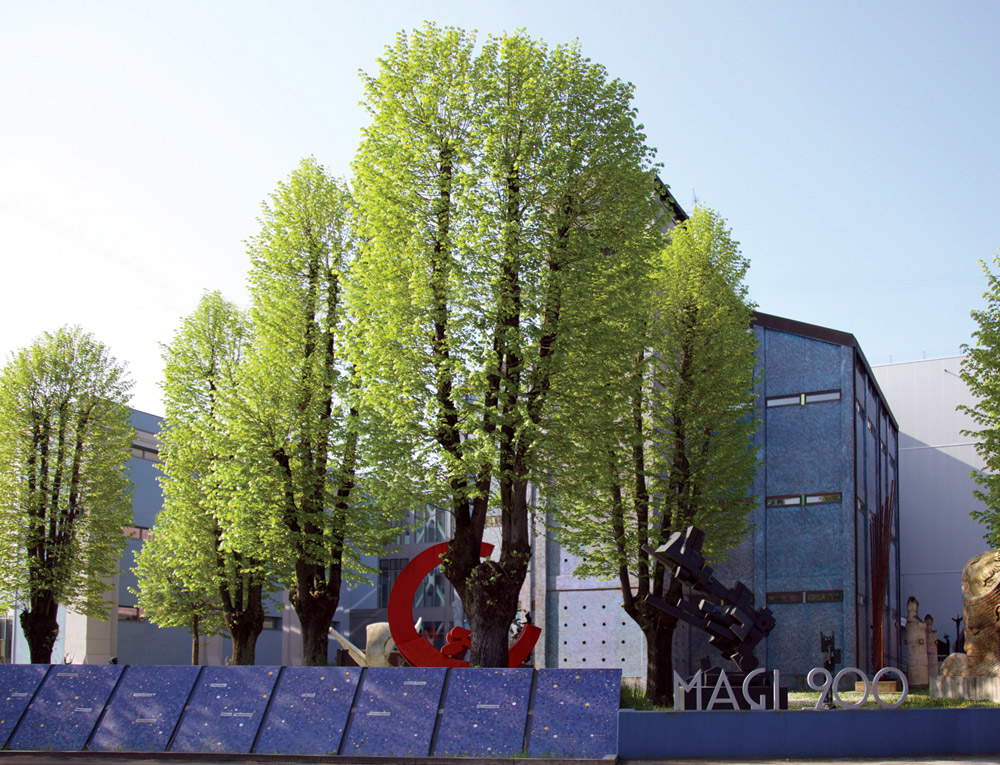 |
| The MAGI ’900 Museum in Pieve di Cento |
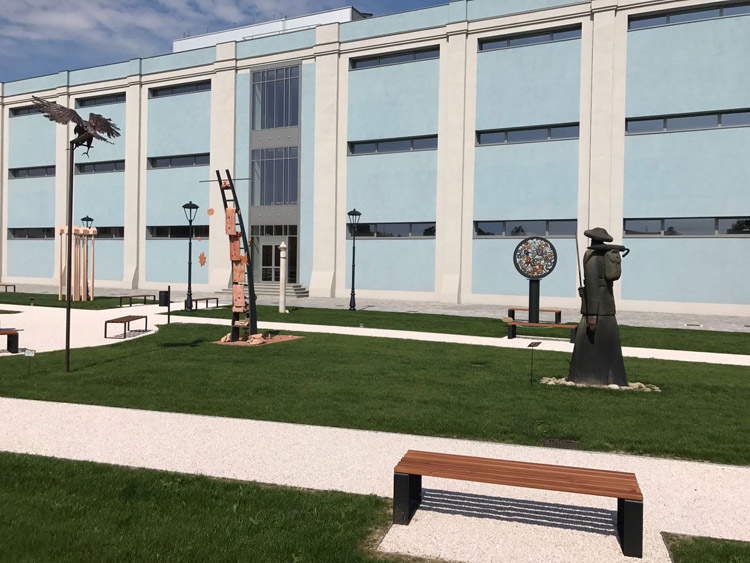 |
| Exterior of the MAGI ’900 Museum |
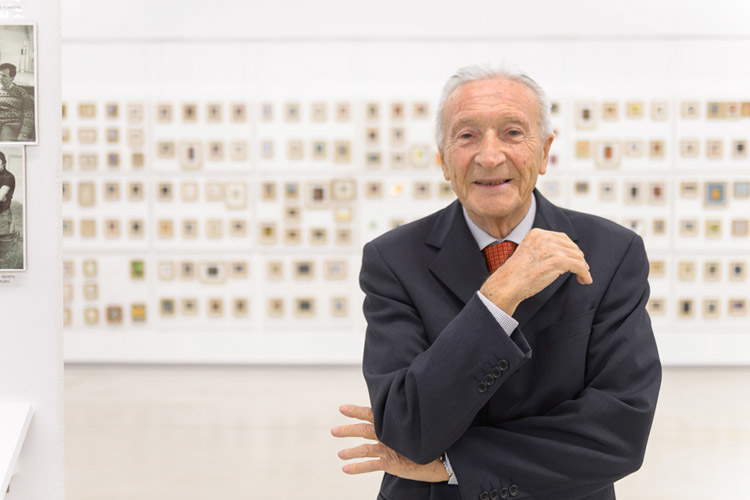 |
| Giulio Bargellini |
The collection, dedicated to the art of the 20th and 21st centuries and developed from the individual interests of Giulio Bargellini, who began by following his own passions (e.g., interest in a certain historical period or artist), his curiosities, his personal inclinations and even his friendships: many of the artists with whom the entrepreneur came into contact in the early years of his “career” as a collector in fact take on a starring role within the MAGI ’900 Museum. This is the case, for example, of Tono Zancanaro, the first artist whose works Bargellini bought, and to whom he was moreover linked by a solid friendship: a room in the museum is dedicated to him, a figurative, anti-fascist painter who trained with Ottone Rosai. The museum houses hundreds of works, collected in small nuclei that Bargellini imagined almost as small exhibitions aimed at investigating a problem or theme characterizing a specific historical period. A large and eclectic collection, within which it is not uncommon to come across names of weight, names that have marked the history of Italian art. Indeed, it should be emphasized that the vast majority of the works belong to Italian artists. There is no shortage of exceptions (the most famous name, probably, is that of Marc Chagall), but Bargellini never hid his own peculiar interest in art produced in Italy. An unusual interest, if one thinks of the history of recent collecting, but one that was also able to feed on the direct knowledge of many of the artists in the collection and that has the peculiarity of giving prominence to artistic personalities who are perhaps minor, but capable of powerful works.
The exhibition itinerary begins with the core of the “Historic Masters of the Twentieth Century.” from the late 19th century, the section investigates the developments of art in the early 20th century, focusing especially on the relationship between avant-garde and tradition, exhibiting works by all the greatest protagonists of that era, from Giovanni Boldini to Felice Casorati from Amedeo Modigliani to Giorgio De Chirico, and then again Fortunato Depero, Giuseppe Capogrossi, Mario Mafai, Renato Guttuso, Gino Severini, Mario Sironi, Alberto Burri, Piero Manzoni, Antonio Ligabue, Aligi Sassu, Emilio Vedova, and Fausto Pirandello. Then there is a section specifically dedicated to the Belle Époque, which stands out for its own specificity: the works of Austrian painter Ludwig Lutz Ehrenberger, an artist who narrated the Viennese society of his time and whom MAGI ’900 intends to enhance by exhibiting the largest museum collection dedicated to him worldwide. One of the most interesting sections of the museum is the one dedicated to theart of the Fascist twenty-year period, which documents how even through art Fascism nurtured the myth of the Duce: this nucleus, in addition to exhibiting works by artists such as Thayaht and Renato Bertelli (with two celebrated works such as Dux and the Continuous Profile of Mussolini, respectively), also represents a remarkable historical testimony, since a large part of it consists of the collection of journalist Duilio Susmel, to whom Mussolini himself donated many works. Having survived the destruction that followed the end of the World War, the works in this section of the collection constitute a rare nucleus with few equals and preserve a precious memory of one of the most tragic pages of our history.
It then continues with two rooms devoted to what Bargellini sees as the two opposing trends in contemporary art, namely so-called aniconic art and figurative art, seen in their development from the early twentieth century to the present day, and to which two rooms are devoted: for “aniconic” art, which came to prominence with the historical avant-gardes, there are works by Turi Simeti, Enrico Accatino, Nadia Benelli, Nicola Carrino, and Graziana Pentich, while for figurative art there are works by Emilio Notte, Renzo Biasion, and Atanasio Soldati. Contemporaryabstract art is investigated in a section entitled “Abstract Present,” originating from an exhibition held at MAGI ’900 in 2007. This is followed by thematic nuclei dedicated to the artists Giulio Bargellini intended to investigate in depth: the aforementioned Tono Zancanaro and others such as Mauro Reggiani, Carlo Levi, Concetto Pozzati, and Nado Canuti.
Finally, there is also, since a few years, a part dedicated toancient art, divided into two sections, and arrived at MAGI ’900 on deposit so that the public could admire it: these are works from two buildings that became uninhabitable following the earthquake that struck Emilia and the lower Mantua area in 2012. The first section houses works from the collegiate church of Santa Maria Maggiore in Pieve di Cento: these are masterpieces of 17th-century Emilian painting by artists such as Guido Reni, Guercino, Giovanni Francesco Gessi, Lavinia Fontana and others. “Keeping a heritage of fundamental importance to one’s community is an act of responsibility,” reads the presentation of the works in this section on the museum’s website: “In the emergency caused by the earthquake, keeping alive and defending this sense of belonging was a priority whose spirit Giulio Bargellini immediately understood well, and the rapid synergy found with the other protagonists of this exemplary affair Parish, Municipality, Superintendence confirmed that, when a community has dreams, resources and people capable of uniting in a shared planning, even in critical moments the wealth does not dissipate; on the contrary, in difficult circumstances, the entire value system grows, as everyone sees its importance with new eyes, developing a more attentive sensitivity.” The other section includes four paintings (a Sibyl and a Magdalene by Guercino, a Magdalene by Benedetto Gennari, and a Madonna and Child with Saint Gaetano da Thiene by Ubaldo Gandolfi) owned by the Fondazione Cassa di Risparmio di Cento that were already in storage at the Pinacoteca Civica, which, like the collegiate church, had also become uninhabitable: it was therefore decided to bring the works to MAGI ’900 so that the public could continue to see them.
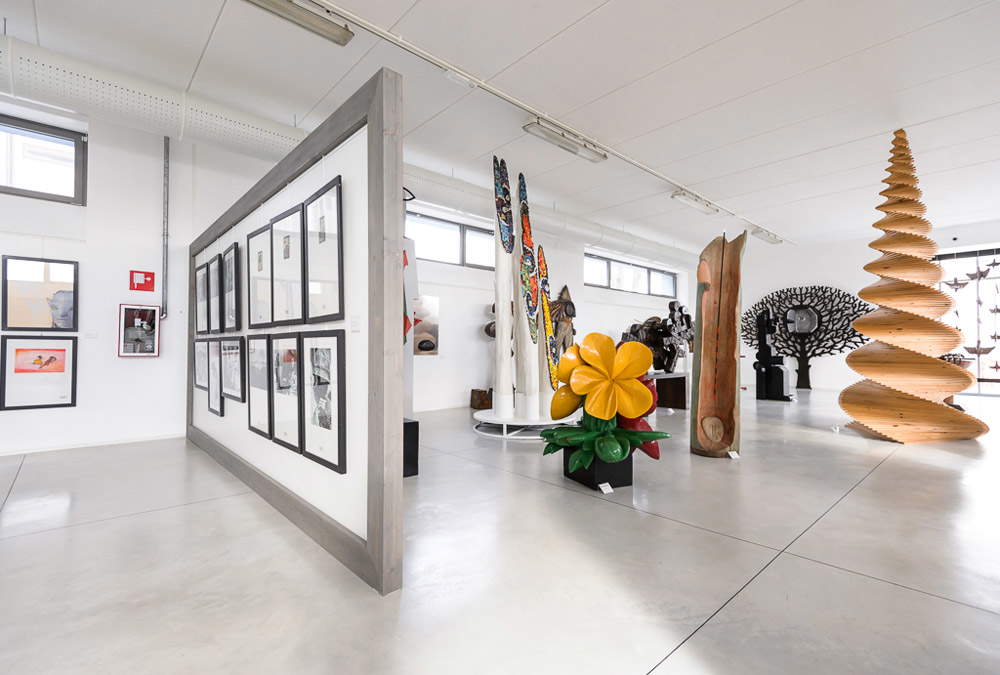 |
| A room in the MAGI ’900 Museum. |
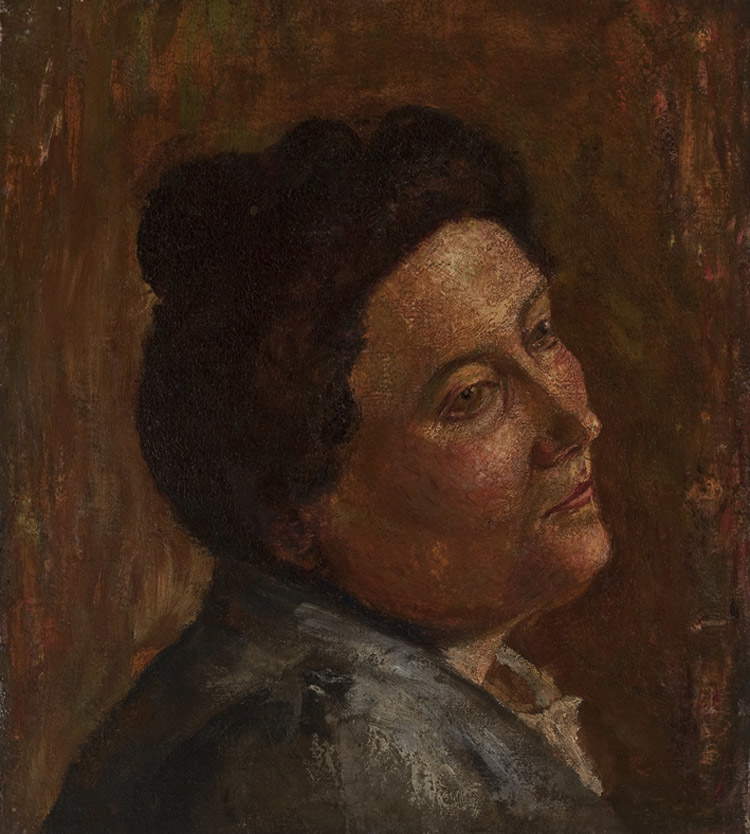 |
| Amedeo Modigliani, Portrait of Mrs. Micheli (1904; Pieve di Cento, Museo MAGI ’900) |
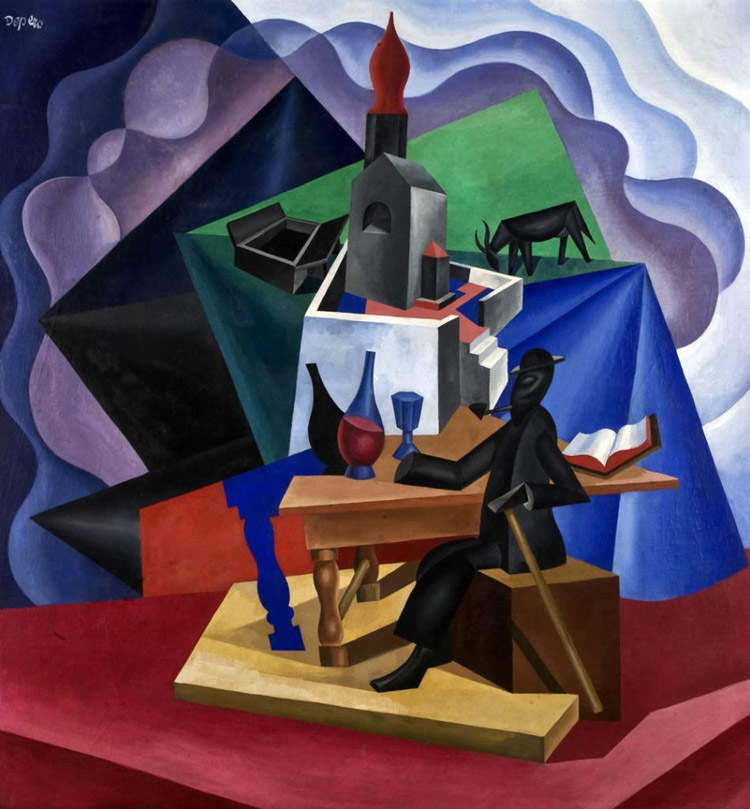 |
| Fortunaro Depero, Anacapri (1920; Pieve di Cento, Museo MAGI ’900) |
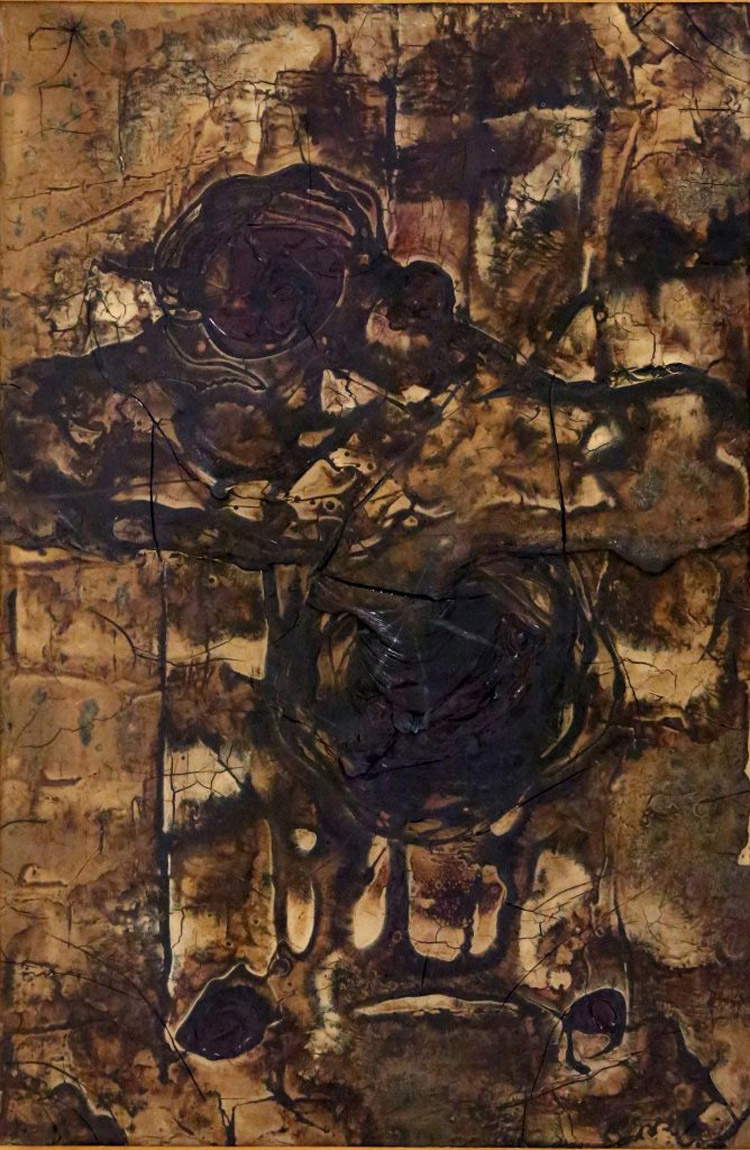 |
| Piero Manzoni, Untitled (1957; Pieve di Cento, Museo MAGI ’900) |
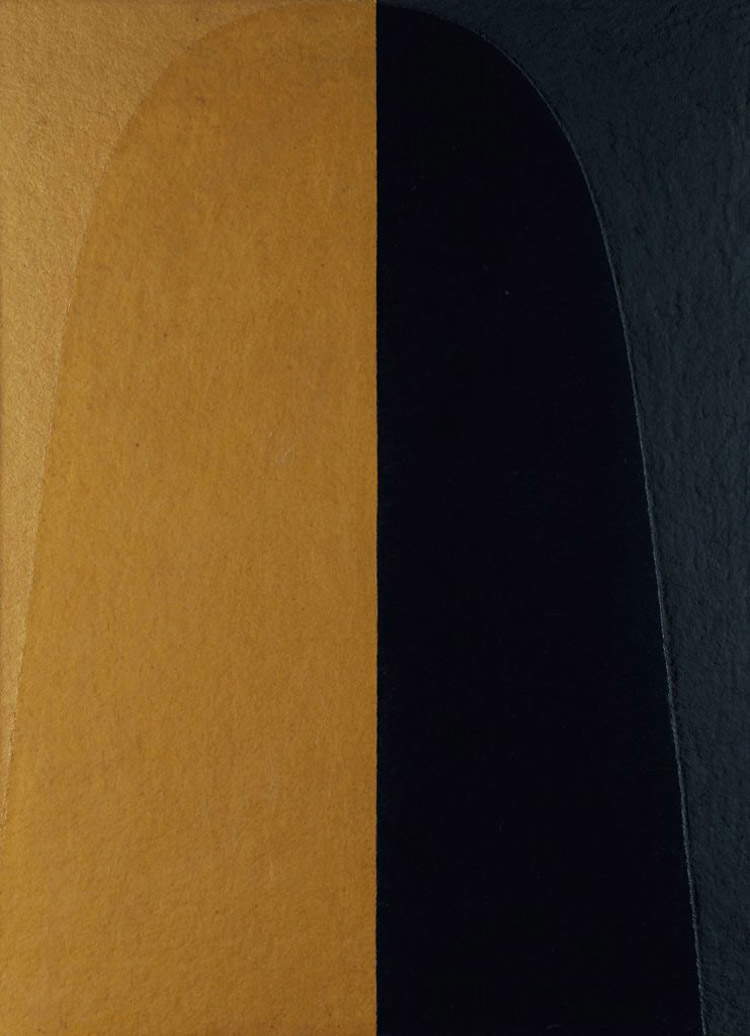 |
| Alberto Burri, Cellotex (1973; Pieve di Cento, Museo MAGI ’900) |
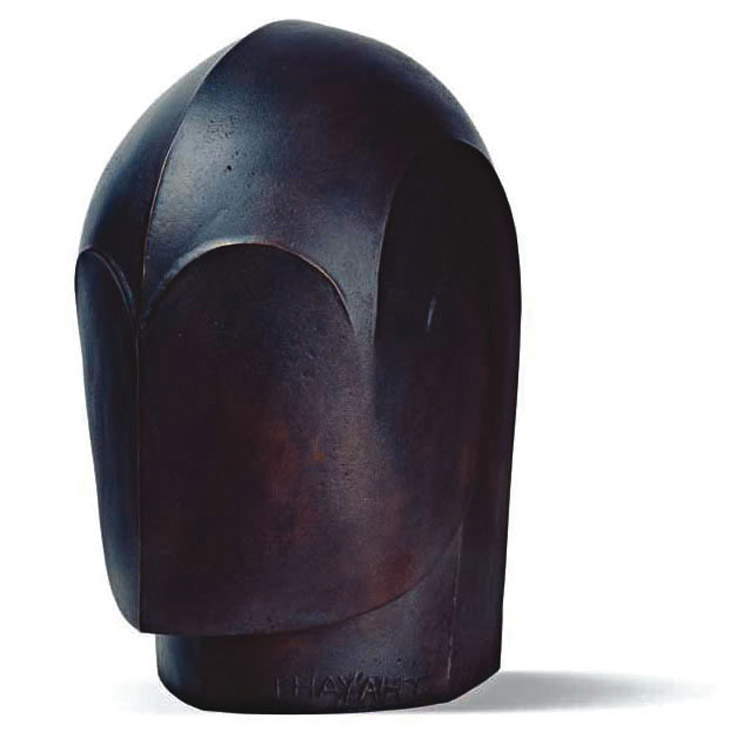 |
| Ernesto Michahelles known as Thayaht, Dux (1929; Pieve di Cento, Museo MAGI ’900) |
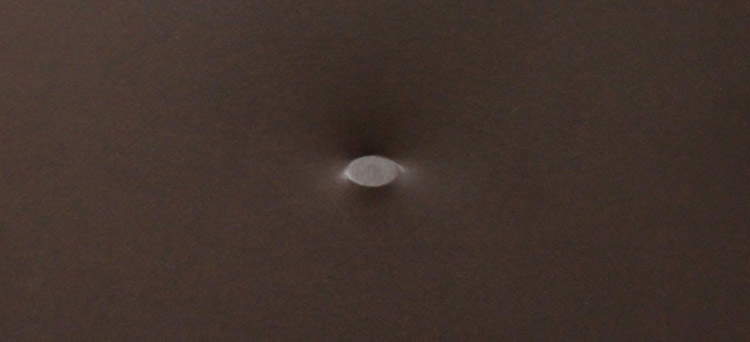 |
| Turi Simeti, A Brown Oval (1983; oil on canvas; Pieve di Cento, Museo MAGI ’900) |
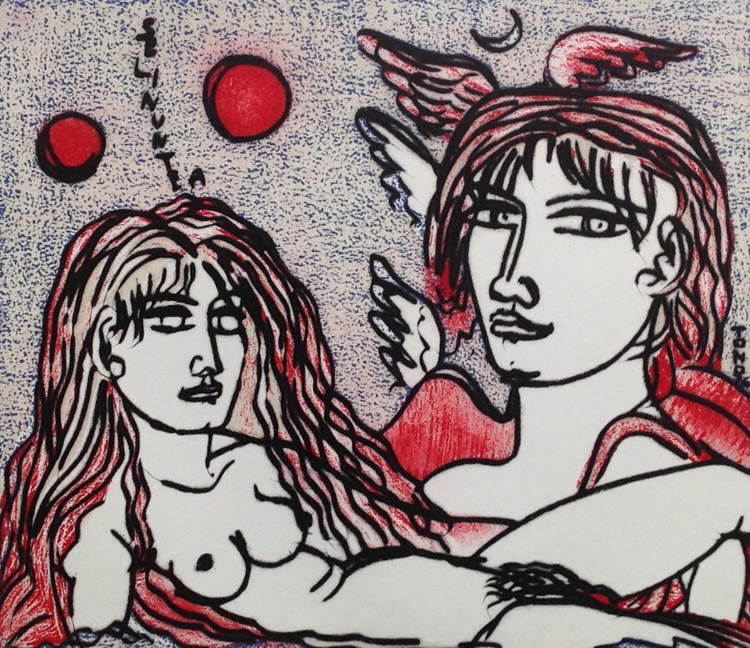 |
| Tono Zancanaro, Selinuntea(1976; oil on canvas; Pieve di Cento, Museo MAGI ’900) |
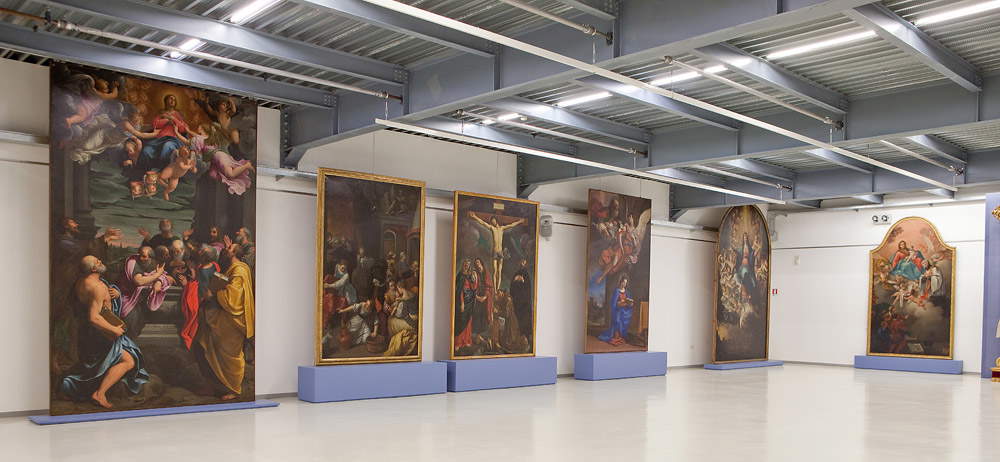 |
| Paintings from the collegiate church of Santa Maria Maggiore |
It is worth mentioning the exhibition spaces of the MAGI ’900 Museum: three rooms that host temporary exhibitions dedicated, of course, to 20th-century and contemporary art. Finally, the museum is enriched with a library, a cafeteria, a bookshop, an Open Box area where multidisciplinary exhibitions and installations designed specifically for such a space alternate, and workshops for educational activities. MAGI ’900, convinced that working with schools, children and young people is fundamental, has endowed itself with its own educational department, called MAGICOMAGI, born from the continuous exchange of ideas between the museum’s operators, teachers and parents: many activities are proposed, divided according to age, as well as training meetings for teachers and creative workshops for families. In fact, the museum’s intent is to develop projects that can develop interest and knowledge of art even among the youngest.
For those who would like to visit it live, MAGI ’900 is open Tuesday through Sunday from 10 a.m. to 6 p.m. All practical information, as well as information about the collections, individual artists, sections and the history of the museum, is available at www.magi900.com.
Warning: the translation into English of the original Italian article was created using automatic tools.
We undertake to review all articles, but we do not guarantee the total absence of inaccuracies in the translation due to the program. You can
find the original by clicking on the ITA button. If you find any mistake,please contact us.









































